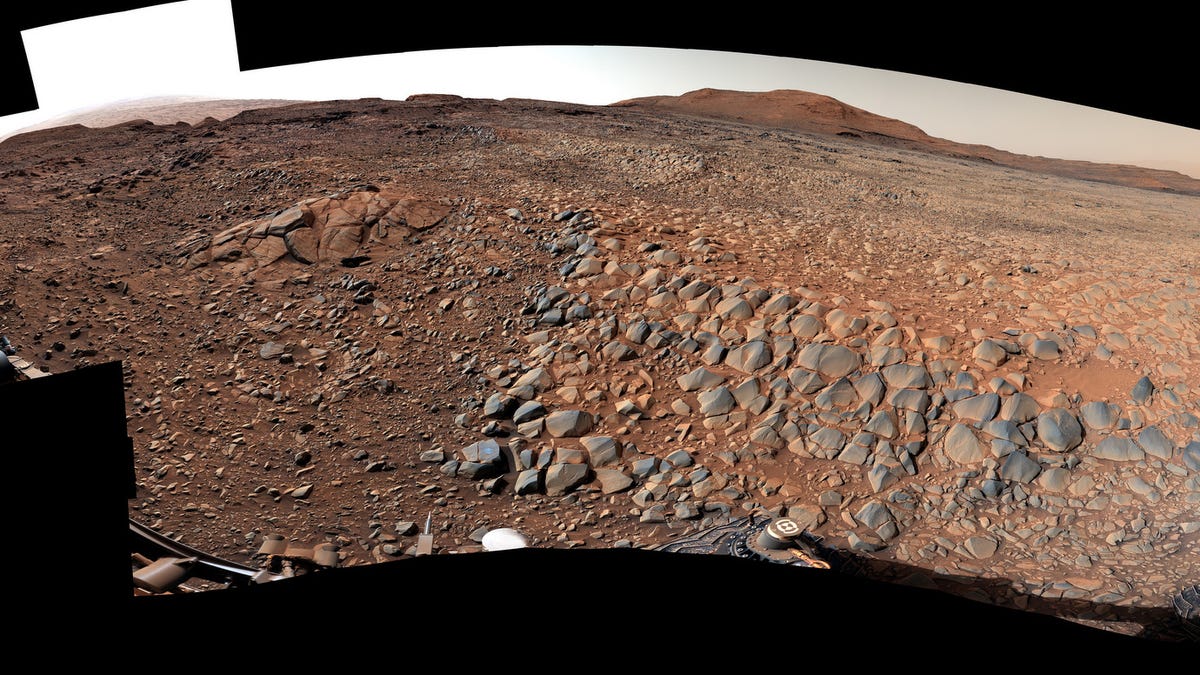'Knife-Edged Rocks' on Mars Force NASA Rover to Turn Around
Curiosity's wheels have seen enough horrors.
NASA's Curiosity rover is an accomplished mountain climber already. It's been slowly working its way up the lower layers of Mount Sharp, the central peak in the Gale Crater on Mars. But as all pioneering mountain climbers know, sometimes you have to reevaluate the route and find a better, safer way to go.
On Thursday, NASA announced Curiosity had encountered "knife-edged rocks" in an area described as "gator-back" terrain on the Greenheugh Pediment, the name given to a sloped area with a rugged cap of distinctive sandstone features. The rover was exploring the area and looking at continuing along until its team got an eyeful of what turned out to be a funkytown of rocks. Curiosity turned back and will find another way.
"It was obvious from Curiosity's photos that this would not be good for our wheels," Megan Lin, Curiosity project manager at NASA's Jet Propulsion Laboratory, said in a statement. "It would be slow going, and we wouldn't have been able to implement rover-driving best practices."
Curiosity's aluminum wheels have been the subject of much scrutiny. Since the rover landed in 2012, its wheels have taken quite a beating, but adjustments to routes and how the rover handles its drives are prolonging their lifespan. They might look rough, but the rover team expects them to last for the duration of the mission.
Mount Sharp is 3.4 miles (5.5 kilometers) tall. It's a hot spot for exploration due to exposed layers of sediment and its history of water in ancient Martian times. Curiosity is investigating whether Mars might have once been habitable for microbial life. The rover's goal isn't to summit Mount Sharp, but rather to inspect its fascinating lower reaches.
"The gator-back rocks aren't impassable," NASA said. "They just wouldn't have been worth crossing, considering how difficult the path would be and how much they would age the rover's wheels."
Curiosity's new route for exploration isn't a bad thing. It will take the explorer back to an intriguing transition zone. "It was really cool to see rocks that preserved a time when lakes were drying up and being replaced by streams and dry sand dunes," said Abigail Fraeman, Curiosity deputy project scientist at JPL. "I'm really curious to see what we find as we continue to climb on this alternate route."


